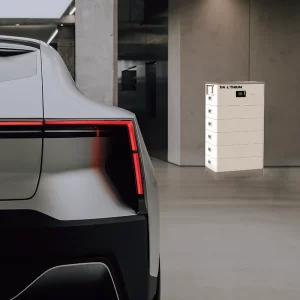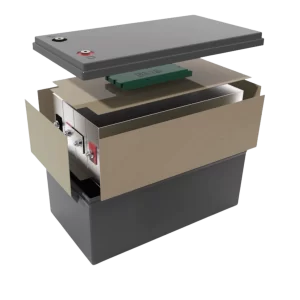Driving on the pen road, with a grand adventure in your beloved RV with a fully charged battery. It’s a world of freedom, exploration and unforgettable experiences. But among all the excitement and anticipation, one critical factor is often overlooked—the health of the RV’s batteryhttps://www.dalithium.com/rv-trailer-camper-deep-cycle-batteries/.
Your battery is the heartbeat of your mobile oasis, powering everything that make life on the road a breeze. Without a well-maintained battery, your dream camper van could quickly become a nightmare of flickering lights and silent systems. But Do NOT BE AFRAID! This exciting guide will uncover the secrets to keeping your lithium RV battery in top condition.
Explaination of an rv battery (Components and Structure)

An RV battery packed by several components which support electrical power continuously. Knowing more of these components will help you better taking care of your battery.
Battery Case: The outer casing that isolated the battery’s internal components and protects them from external dust and water.
Electrolyte: Mixed sulfuric acid and water that facilitates the flow of electricity within the battery.
Positive and negative: The plates are sheets of lead coated with active materials that undergo chemical reactions during charging and discharging.
Separators: An insulating material is placed between the positive and negative plates to prevent short circuits.
Terminal Posts: Electrical connections to transfer power for the RV’s electrical system
Characteristics of RV batteries
In order to optimize the performance and life of a 24 volt RV battery, it is important to understand the following characteristics
Capacity refers to the amount of electrical energy the camper van battery can store and deliver.
Discharge Rate: This indicates how quickly the lithium RV batteries discharges its stored energy.
Cycle Life: This represents the cycles of charge and discharge that a lithium battery can withstand before its capacity drops significantly.
Self-Discharge Rate: Indicates the rate at which a battery loses its capacity when unused.
Keep your RV’s battery healthy by following these battery care tips.

Protecting Against Deep Discharge
Deep cycled discharge can significantly shorten the life of a 12V lithium RV battery. Limit use of power-hungry devices when the battery is low. Use a deep cycle battery monitor or voltage indicator to track the battery’s state of charge. Pay attention to a battery disconnect switch investment to prevent parasitic loads from draining the battery when the RV not in use.
Storing your RV’s battery health properly
If you going to store your RV’S battery in healthy for an extended period, keeping the battery correctly is important. Disconnect the battery from the waterproof van’s electrical system. Store the battery in a cool, dry location away from direct sunlight. Consider using a maintainer or trickle charger to maintain the charge level during storage.
Utilizing battery disconnect switches
Installing 12 volt battery disconnect switches can help prevent the unnecessary drain on your RV’s battery. When the van is not in use, turn off the battery disconnect switch to isolate the deep cycle battery from the electrical system. This prevents parasitic loads, such as propane detectors or clocks, from draining the battery when unnecessary.
Checking and Cleaning Battery Plus Terminals
Corroded or dirty battery terminals can prevent proper electrical connections. Disconnect the LiFePO4 battery cable and clean the terminals with a wire brush or battery terminal cleaner. Apply a thin coat of petroleum jelly or terminal protector to the terminals to prevent corrosion.
Implementing temperature control measures
Critical temperatures can affect camper van battery performance and life cycles, even fire cases. Avoid exposing the excessive heat or cold. Insulate the 12 volt battery compartment or use battery blankets to regulate the temperature. Park your RV in the shade whenever possible to minimize exposure to direct sunlight.
Considering Solar Charging Options
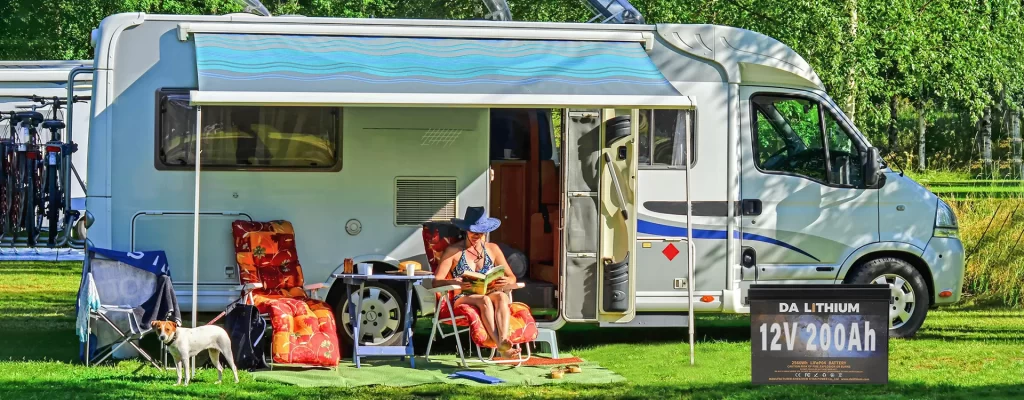
Solar charging systems provide an environmentally friendly way to recharge your RV batteries. Install solar panels on the roof of your waterproof RV to harness sunlight and convert it into electricity. A solar charge controller regulates the charging process and prevents overcharging or undercharging.
Extending Battery Lifespan with Proper Charging Profiles
Properly charging your RV battery is critical to its longevity.
Use a charger designed for your battery type (e.g. deep cycle, AGM). Follow the manufacturer’s recommendations for charging voltage and current. Avoid overcharging the battery, which may cause the battery to fail prematurely.
Understanding battery capacity and load management
Knowing battery capacity and managing electrical loads can keep batteries from being over-stressed. Determine the power requirements for RV appliances and electronics. Calculate the battery capacity required to support your intended use. Avoid overloading the battery beyond its capacity, otherwise its lifespan will be shortened.
Implementing energy-efficient practices
Energy conserving extends battery charge times and reduces stress on electrical systems. Replace traditional incandescent bulbs with energy-efficient LED lighting. Minimize the use of high-power appliances when running on RV batteries. Choose energy-efficient cooling and heating options in your RV.
How to Maintain Your RV Battery
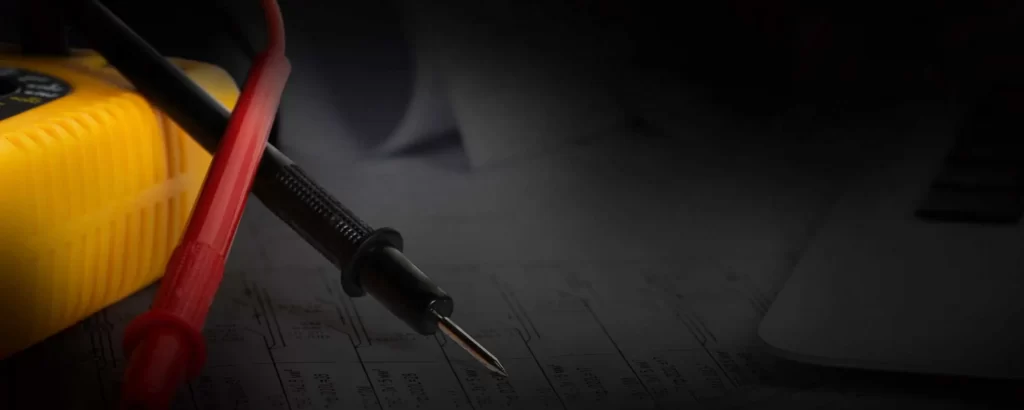
In addition, to follow up mentioned above care tips, proper maintenance is important and crucial for keeping your RV battery healthy. Regularly clean the battery case and terminals. Inspect the battery for any signs of damage or wear. Test the battery’s charger voltage and state of charge periodically.
Follow the manufacturer’s recommendations for battery maintenance.
How to Clean Your RV’s Battery
Follow the below steps to clean your RV battery:
Safety first: Wear gloves, goggles, and protective clothing
Disconnect the battery: unplug the cables, starting with the negative (-) terminal and moving to the positive (+) terminal.
Prepare a cleaning solution: Mix baking soda and water to create a cleaning solution.
Clean the battery: Dip a brush or sponge into the cleaning solution and scrub the battery case, terminals, and connectors.
Rinse with water: Use clean water to rinse off the cleaning solution and remove any residue.
How to Test Your RV Battery’s Healthy
Follow these steps to test your RV battery:
Prepare a voltmeter: Obtain a voltmeter or multimeter capable of measuring DC voltage.
Set the voltmeter: Set the voltmeter to the DC voltage setting and ensure the range is appropriate for your battery voltage.
Safety precautions: Put on safety gloves and goggles before handling the battery.
Check the battery voltage: Connect the voltmeter to the battery terminals, ensuring the positive (+) lead is connected to the positive terminal and the negative (-) lead to the negative terminal.
Read the voltage: The voltmeter will display the battery’s voltage. Compare the reading to the manufacturer’s recommended voltage for a fully charged battery.
Analyse the results: If the voltage is significantly lower than recommended, it may indicate that the battery is discharged or malfunctioning.
Load testing (optional): Load testing involves applying a controlled electrical load to the battery and evaluating its voltage response. Consult a professional or battery specialist for load testing procedures.
How to Charge and Discharge Your RV Battery
Charging the battery: Connect your waterproof deep cycle RV battery to a power source, such as shore power or a generator, to charge the battery. Use an appropriate charger to ensure proper charging.
Discharging the battery: As you use appliances and electrical devices in your RV, the battery will gradually discharge. It is important to monitor the battery’s state of charge to prevent deep discharges, which can shorten its lifespan.
Balancing charging and discharging: Regularly recharge your battery to maintain its charge level and avoid deep discharges. Practice energy-efficient habits to minimize strain on the battery.
What are the risks of not keeping my RV’s battery healthy?
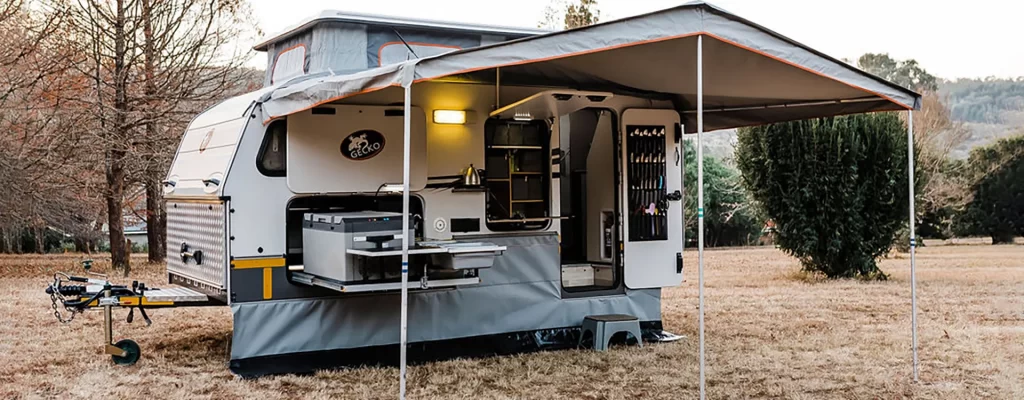
Reduced battery lifespan: Lack of proper care and maintenance will lead to battery failure prematurely, requiring frequent battery replacements.
Limited electrical power: Incorrect maintained battery may not deliver the ability to run essential appliances and systems in your camper van.
Increased risk of battery failure: Neglected batteries are more susceptible to sulfuration, corrosion, and internal shorts, increasing the likelihood of battery failure during travel.
Inconvenience and added costs: Dealing with a dead or malfunctioning battery while on the road can disrupt your plans and lead to unexpected expenses for repairs or replacements.
Safety hazards: Corroded or damaged batteries pose safety risks, such as acid leaks and electrical shorts, which can lead to fire hazards or personal injury.
Conclusion
In conclusion, taking proactive steps to keep your RV battery healthy is essential for a hassle-free and enjoyable RVing experience. Our article on how to keep your RV battery healthy was helpful. DA Lithium Battery is committed to providing the best battery solutions for your recreational vehicle. By following the tips and tricks we have outlined, you can extend the life of your RV battery and ensure that you have power support when you need it most. If you have any questions or comments, please don’t hesitate to contact us at DA lithium. Thank you for reading, and happy travels!

